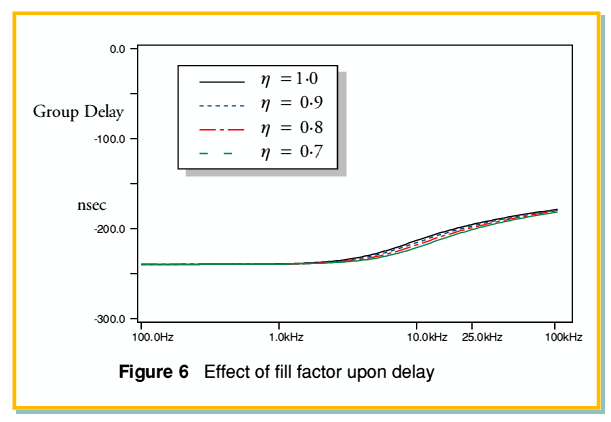
4. Effects of fill-factor
For the sake of example, the cables considered until now were assumed to be made of copper with an effective fill factor value of unity. To assess the typical effects of a change in fill factor, or of the chosen conductive material, we can recalculate the behaviour of a cable similar to that used before, but with various fill values or materials. As before we therefore assume a 3 metre length of twin-feeder with 2mm diameter wires spaced with their centers 6mm apart.
Figure 5 shows the power loss for four differing values of the fill factor, using copper wires.
Looking at figure 5 we can see that changing the fill factor from being unity down to 0·7 has a surprisingly modest effect upon the signal loss behaviour.
Figure 6 shows the delay behaviour for the same set of fill factor values.
Again, the changes are relatively modest. On the basis of these results it does not seem as if the fill factor value of stranded wires is likely to have a noticeable effect for twin feeders of this type. That said, it may be more significant for wire diameters and spacing other than those used for this example. More generally, however, it seems that a Litz construction (with the strands individually stranded) is probably usually required for multistranded wires to have audio properties that differ noticeably from solid wires. That said, multistrand is often physically more flexible, and may be easier to connect, so may be more convenient than solid-core for other practical reasons.





